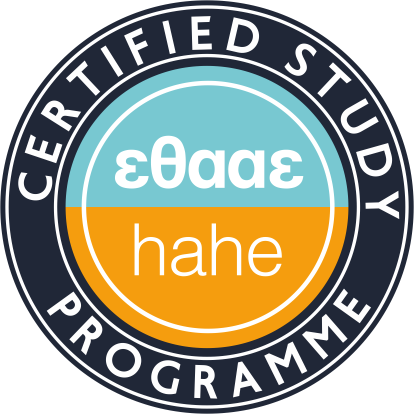Law and Politics in the Middle East
Teaching Staff: Livas Sotiris
Course Code: YE-9602
Gram-Web Code: ΔΙ0600
Course Category: Specific Background
Course Type: Compulsory Elective
Course Level: Undergraduate
Course Language: English / Greek
Semester: Any Spring
ECTS: 2
Total Hours: 2
Erasmus: Not Available
Students get in touch with the basic legal, social, political and religious principles of the countries, statesandsocietiesofthebroaderMiddleEasternregionandtheIslamicworld. They learn the history of the great Muslim empires of the past as a prerequisite for the understanding of current developments. Films, musical material and videos are used to bring the students closer to the matter in hand. Students also learn about the creation of the state of Israel and all the relevant issues related to the Palestinian problem. They learn the basic tenets of Islamic fundamentalism and jihadi extremism. They get accustomed with the hate speech and the hate ideologies related to the history of the area (anti-Semitism, Islamophobia, persecutions of the Christian population, anti-Shii hatred).
Students come close to the basic tenets of the social, political, religious and financial reality of the states, countries and societies of the Middle East.Using an array of tools (films, videos, in – class debates) they learn to analyze the most important current trends relating to the region’s developments (the Israeli – Palestinians squabble, Islamic fundamentalism – extremism, the Irani nuclear quagmire, the civil war in Syria, Turkey’s new external policy). By the end of the semester, students should have obtained a sound knowledge of the religious, ideological, political and social situation in the broader Middle eastern area. More specifically, students learn to:
• Decipher the basic and most fundamental tenets and rules of Islam.
• Find their way around the way these countries were construed, by learning their history, their religion and their civilization (the great Muslim empires, the Ottoman empire, colonization and decolonization wars, construction of the new states, the Israeli – Arab wars, the oil boom and the oil economies of the Gulf states, the new ideologies: Panarabism, Islamic fundamentalism, Irani religious assertiveness, AKP’s neo – Ottomanism etc)
• Debate in the class in relation to these issues
• Understand all current issues having to do with Middle East
1st week:
ISLAM – first steps in history, basic theological and legal principles I
2nd week:
ΙSLAM – first steps in history, basic theological and legal principles I
3d week:
Historical development of the Muslim empires – Al Andalus – the Mughal empire – Ottoman empire
4th week:
Sunnis and Shiis – the great religious, philosophical and legal rifts
5th week:
Israel, the Jews and antisemitism
6th week:
The Palestinian issue today – the current challenges for the region
7th week:
Islamic fundamentalism and extremismΙ
8th week:
Islamic fundamentalism and extremismΙΙ
9th week:
Turkey – a brief presentation of its historical development
10th week:
Islamophobia
11th week:
Islam in the West – systems of incoroporation
12th week:
Debating about specific issues: the headscarf “problem”
13th week:
Debating about specific issues: debating history and the Greek – Turkish relations
- Kouloumbis, Th. (1990), International relations: Power and justice, Prentice Hall.
|
Activity |
Semester workload |
|
Lectures |
26 |
|
Written examination |
2 |
|
Preparation for the examination |
15 |
|
Weekly studying |
7 |
|
|
|
|
|
|
|
Course total
|
50 |
|
Use of ICT in teaching |
Written or/and oral examination, project
Back
Undergraduate
Secretariat
Galinos Building (1st floor)
Corfu, GR-49132
Open to the public:
Mon, Wed, Fri: 11am - 1pm
Tue, Thu: 11am - 1pm (Erasmus+)
 E-Class Platform
E-Class Platform
 eSecretariat
eSecretariat
 Webmail
Webmail
 Learning Material Management
Learning Material Management
 Internship Portal
Internship Portal
 Library
Library





 Law and Politics in the Middle East
Law and Politics in the Middle East
